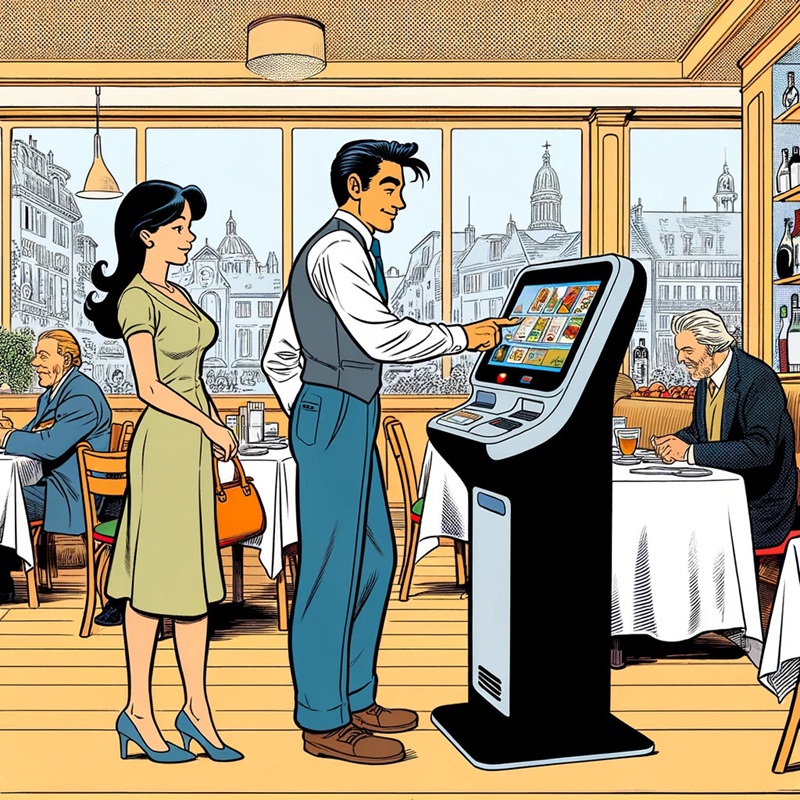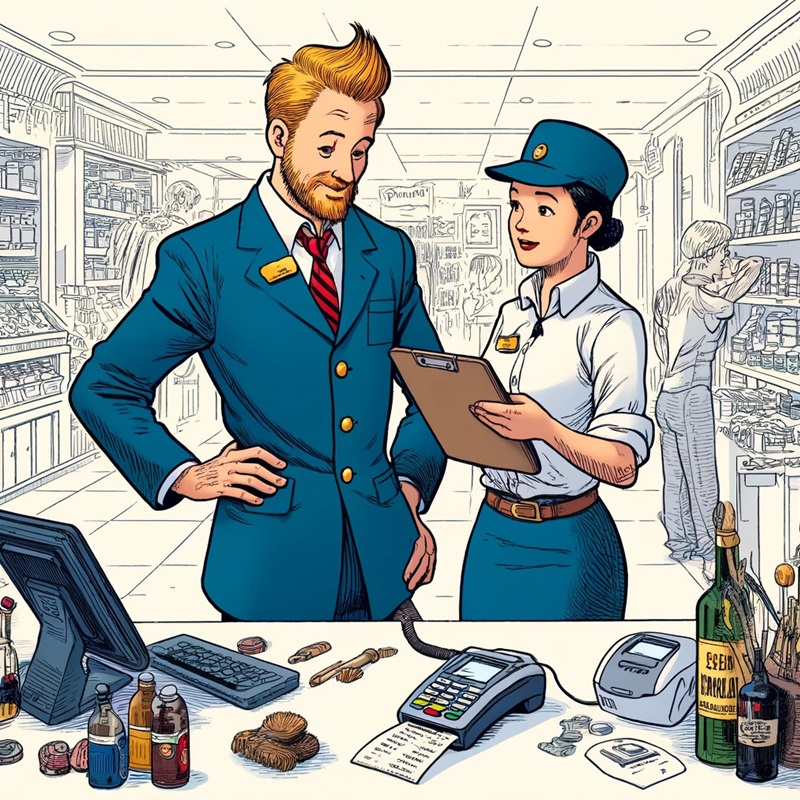
Restaurant Kiosks
Efficiency and customer satisfaction in quick-service restaurants (QSRs) and cafes are paramount. One technological advancement that has significantly impacted the industry is the adoption of self-service kiosks. These interactive systems have revolutionized order placement and payment processes, leading to improved efficiency and reduced wait times. In this blog post, we will explore five key aspects of how kiosks are transforming the dining experience in QSRs and cafes.
Key Benefits of Kiosks for Quick-Service Restaurants
The introduction of kiosks in quick-service restaurants and cafes brings a myriad of benefits, fundamentally changing how these establishments operate. At the forefront is the enhancement of operational efficiency. Kiosks streamline the ordering process by allowing customers to place their orders directly through an intuitive interface. This reduces the need for additional staff at the counter, enabling employees to focus on other essential tasks such as food preparation and customer service.
Another significant benefit is the increase in order accuracy. Human errors are minimized as customers input their orders directly into the system, specifying exactly what they want. This leads to higher customer satisfaction as orders are less likely to be incorrect. Additionally, the data collected from kiosk orders can be analyzed to identify popular items and peak ordering times, helping restaurants optimize their menus and staffing.
Speed and Efficiency: Reducing Wait Times
One of the most notable impacts of kiosks is the reduction in wait times. During peak hours, traditional order-taking methods can lead to long lines and frustrated customers. Kiosks alleviate this problem by allowing multiple customers to place orders simultaneously, bypassing the bottleneck that often occurs at the counter.
For instance, fast-food giant McDonald’s has reported significant improvements in order processing times with the implementation of kiosks. Customers appreciate the ability to order at their own pace without feeling rushed, while the kitchen staff can begin preparing the food as soon as the order is placed. This seamless process not only speeds up service but also enhances the overall dining experience, encouraging repeat visits.
Personalized Shopping Assistance
Personalization is a powerful tool in enhancing customer experience, and kiosks excel in this area. Modern kiosks can integrate with loyalty programs and customer accounts to offer tailored recommendations based on previous purchases and preferences. This personalized shopping assistance makes customers feel valued and enhances their connection with the brand.
For example, a customer who frequently orders a specific type of coffee can receive recommendations for complementary items or be notified of promotions related to their favorite products. This level of personalization not only boosts sales through targeted upselling but also builds customer loyalty by making each visit unique and catered to individual tastes.
Enhancing Accessibility and Inclusivity
Inclusivity is an important consideration in today’s diverse consumer landscape. Kiosks contribute to this by offering features that make them accessible to all customers, including those with disabilities. Touchscreen interfaces can be designed with larger text and icons for ease of use, and voice-activated assistance can help customers who have difficulty with manual input.
Moreover, many kiosks provide multilingual support, catering to customers who speak different languages. This ensures that everyone, regardless of their background or abilities, can enjoy a seamless ordering experience. By prioritizing accessibility, restaurants not only comply with regulations but also create an inclusive environment that welcomes all customers.
Future Trends in Restaurant Kiosk Technology
The future of restaurant kiosks is bright, with continuous advancements in technology set to further enhance their capabilities. Artificial intelligence (AI) is poised to play a significant role, enabling kiosks to learn from customer interactions and provide even more personalized recommendations. AI-driven analytics can predict customer preferences and suggest menu items that are likely to appeal to individual tastes.
Another exciting development is the integration of augmented reality (AR). AR can transform the ordering experience by allowing customers to visualize menu items in 3D before making a selection. This immersive experience can help customers make more informed choices and increase their engagement with the brand.
Facial recognition technology is also on the horizon, offering a new level of convenience and personalization. Kiosks equipped with facial recognition can quickly identify returning customers, automatically pulling up their favorite orders and preferences. While this raises important privacy considerations, it demonstrates the potential for kiosks to create highly tailored and efficient customer interactions.
The adoption of kiosks in quick-service restaurants and cafes is revolutionizing the industry, bringing numerous benefits such as increased efficiency, reduced wait times, personalized assistance, enhanced accessibility, and exciting future advancements. As technology continues to evolve, kiosks will play an increasingly vital role in shaping the dining experience, offering customers convenience, personalization, and speed. By embracing these innovations, restaurants can stay ahead in the competitive landscape, delivering exceptional service and building lasting customer relationships
Download our Vendor Selection White Paper
This white paper aims to guide businesses through the process of selecting a payment terminal vendor by examining essential considerations such as security features, integration capabilities, user experience, and cost implications.

